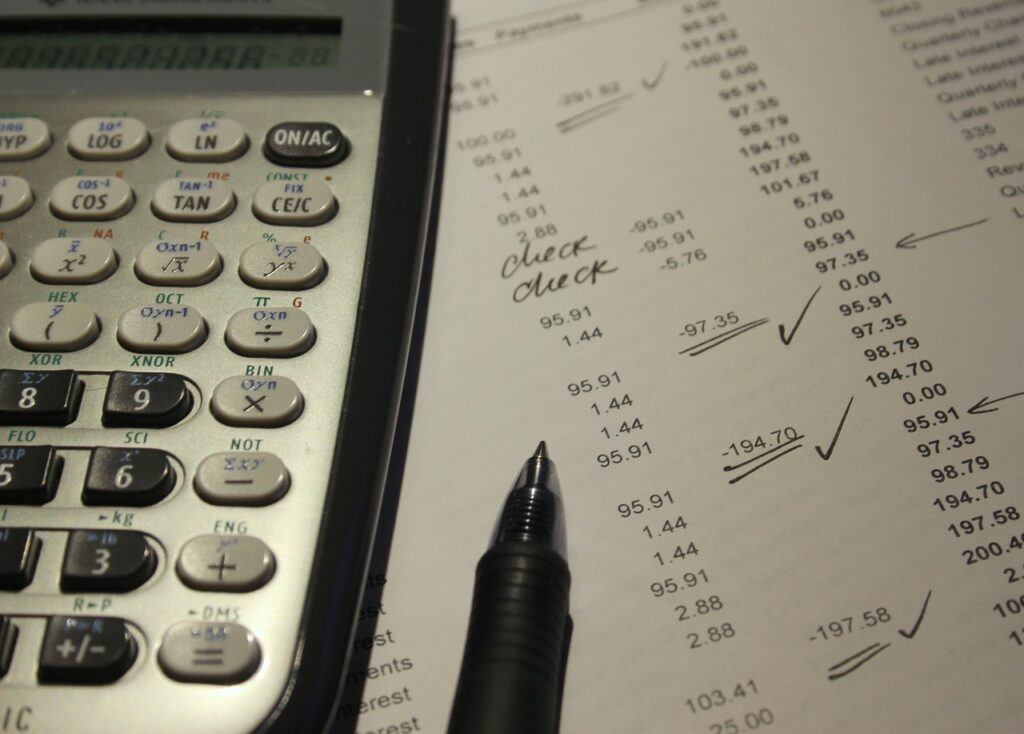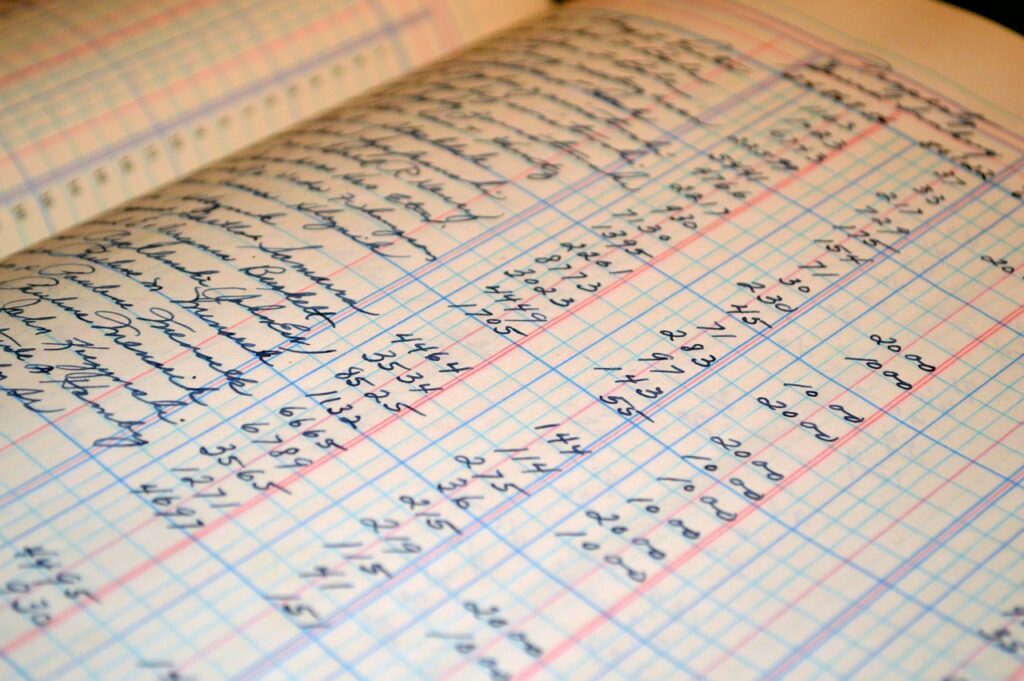
Intro
Accounting is an essential aspect of managing finances, whether it’s for a large corporation or a lemonade stand. But have you ever wondered how businesses keep track of their money and create accurate financial statements? The answer lies in a method called double-entry accounting. In this blog post, we will explore what double-entry accounting is, why it’s important, and provide examples to help you understand this concept better. So let’s dive into the secret behind accurate financial statements – double-entry accounting!

What is Double-Entry Accounting?
Ever wondered how businesses keep their financial information precise and organized? They do it with something called double-entry accounting. It’s like a big game of financial balance, where every transaction influences not one, but two accounts.
Think of it like this – let’s say you’re feeling a bit thirsty and decide to purchase a soda. In your personal life, you would see this as money leaving your pocket. However, in the world of double-entry accounting, this would affect two accounts. Your cash account decreases because you spent money, but on the other side, your expenses account for food and beverages goes up. That’s double-entry accounting in a nutshell!
It may seem a little complicated, but this way of doing things ensures a complete picture of your financial activities. And it makes sure everything stays balanced and accurate. It’s like having two witnesses to every financial event in your business, making sure you’ve got the whole story.
But keep in mind, every financial event will always involve two accounts, but they aren’t necessarily always a cash account and an expense account. The two accounts could also be an asset account and a liability account or an income account and an asset account.
This super important concept is the cornerstone of accounting and is fundamental to maintaining clean, balanced, and trustworthy books for businesses of all shapes and sizes. Now that we’ve got a basic understanding of what double-entry accounting is, let’s explore a bit more about how it actually works.

The Two Sides of Double-Entry Accounting
In the grand game of double-entry accounting, two main characters steal the show – debits and credits. Just like the two sides of a coin, each financial transaction has its debits and its credits.
Let’s think of it as a dance, where each partner, debit and credit, plays a crucial role. When you dance the debit, you’re adding or increasing the value in an account. Take a twirl with credit, and you’re reducing or decreasing the value in an account.
But here’s where it gets interesting – this dance can’t be done solo. The rule of the game insists on having a partner. That means for every transaction, there must be an equal and opposite entry in another account.
Think of it like a see-saw on a playground. On one side, you have your debits, and on the other, your credits. The aim is to keep the see-saw balanced. This idea of balance is at the very heart of double-entry accounting.
So, imagine if you purchased office supplies for your business. Your cash account would dance the credit, reducing because you’ve spent some money. On the flip side, your office supplies account would dance the debit, increasing to reflect the new items you’ve bought.
But remember, the magic only works if the two sides balance. If your debits are doing a salsa and your credits are waltzing away, your books will be out of balance, and that’s not a good look for any business.
So, the moral of the story? In the grand dance of double-entry accounting, debits and credits must always move in harmony, keeping the balance in your business books and painting a clear picture of your financial health. Now, let’s put this theory into practice with an example.

Let’s Try An Example!
Let’s picture this – you’re the proud owner of a small car insurance business. A customer, let’s call him Joe, pays you $500 for a new policy. Now, double-entry accounting has two dance partners ready to boogie. The cash account (which is an asset) busts a move with a $500 debit, meaning your cash pile just grew. Simultaneously, your income account sways to the rhythm of a $500 credit, indicating you earned some money. The dance floor, which is your ledger, stays perfectly balanced with this graceful dance of debits and credits.
Flash forward a bit. A customer, we’ll call her Mary, gets into a minor fender bender and files a $200 claim, which you promptly pay. Now, we’ve got another dance about to start! This time, your cash account does the credit shimmy, decreasing by $200 because you’ve paid some money out. But wait, there’s a second dancer waiting in the wings. Your claim expense account does a $200 debit jive, increasing to record the claim you’ve just paid. Once again, the ledger remains beautifully balanced, with debits and credits in harmony.
See how it works? Double-entry accounting ensures that every financial move you make in your business is recorded from two perspectives, keeping your records accurate, comprehensive, and perfectly balanced. And remember, this dance is not just for cash and expenses; it could also be between asset and liability accounts, or income and asset accounts, or any other combination!
So, now that we’ve seen it in action, are you ready to join the dance of double-entry accounting in your own business?

Why Use Double-Entry Accounting?
So, why should you perform this intricate dance of debits and credits known as double-entry accounting? Could you not just opt for a simpler, easier method of keeping track of your cash flow? Well, here’s the thing, the elegance of double-entry accounting isn’t just in its balanced nature, it’s in the comprehensive picture it paints of your business’s financial wellbeing.
See, with double-entry accounting, you’re not just seeing half the picture (money coming in and going out). Instead, you’re looking at the entire panorama of your business’s financial activity. It’s like watching a movie in high definition instead of standard quality – you catch all the fine details, and the whole picture is so much clearer!
When using double-entry accounting, you get to dive deep into your business’s financial waters and explore everything from expenses to income, from assets to liabilities. This rich, detailed view can prove invaluable when making important financial decisions or creating business strategies.
Additionally, the balancing act inherent in double-entry accounting serves as a built-in error detection system. If at any point your debits and credits are out of sync, it raises a red flag. This can help you catch and correct errors promptly, which is much better than finding out much later that your numbers don’t add up.
Moreover, this method can also act as a safeguard against fraudulent activities. Any discrepancies in the balancing of the books could indicate foul play, providing a chance to investigate and rectify the issue swiftly.
In essence, double-entry accounting isn’t just about having a method to track your money – it’s about having a tool that helps maintain the financial integrity of your business. It’s about having a comprehensive system that paints a clear, detailed, and accurate picture of your business’s financial health, facilitating informed decision-making, error detection, and fraud prevention.
So, the next time you find yourself questioning the worth of double-entry accounting, remember – it’s more than just debits and credits. It’s a proven system that helps keep your business’s financial portrait detailed, accurate, and most importantly, balanced.

Real-Life Application of Double-Entry Accounting
So, how does this double-entry accounting we’ve been discussing show up in real-world scenarios? You’d be surprised to know that it is actually the lifeblood of almost every business operation, no matter how large or small. Let’s dive in and see double-entry accounting in action!
Imagine a business owner who buys some new products to sell in his store. He didn’t pay cash but promised to pay the supplier later. This is known as purchasing on credit. Now, how does the business record this in its books using double-entry accounting? Here’s how it happens:
First, the business owner increases (or debits) his inventory account. The inventory is the store’s assets – the items he plans to sell to make money. When he adds new products to his store, his inventory value goes up. So, that’s our first dancer on the double-entry accounting dance floor – the debit move!
But remember, every debit needs a credit partner to keep things balanced. In this case, the business owner didn’t pay cash for the new products. Instead, he increased his accounts payable – these are the bills he needs to pay later. So, he increases (or credits) his accounts payable account. And just like that, we’ve got our second dancer on the floor – the credit move! Our double-entry accounting dance is complete and perfectly balanced.
Now, let’s fast forward a bit. The business owner sells some of his products. How do we record this transaction in double-entry accounting? Let’s break it down:
First, the business owner increases (or credits) his sales revenue account. This account keeps track of the money the business makes from selling its products. When he makes a sale, his revenue goes up. So, that’s our first move – the credit dance!
But wait, we need a debit partner to keep things balanced. When the business owner sells a product, he doesn’t have it in his inventory anymore. So, his inventory value goes down. Therefore, he decreases (or debits) his inventory account. And voila, we’ve got our second move – the debit dance! Again, our double-entry accounting dance is in perfect balance.
These real-world examples show just how vital double-entry accounting is for recording business transactions. It ensures every business move, no matter how big or small, is accurately recorded and perfectly balanced. And most importantly, it gives the business owner a clear, detailed, and comprehensive picture of his business’s financial health. So, whether you’re a small business owner or a financial whiz kid, double-entry accounting is a key tool to have in your arsenal!


Pingback: Accounting vs Finance: Which One is More Important? – Esvea Accounting ™